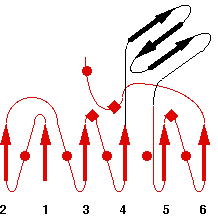3C6X
Name : Hydroxynitrile lyase HNL from Hevea brasiliensis to atomic resolution native with PEG200
Revelation date : 03-Jun-2008
Family : Hydroxynitrile_lyase
Gene_locus : hevbr-hnl
PDB file : ESTHER: header of PDB entry RCSB: Full entry
Comment
Schmidt, A.
Ligand :
References (1)
| Title : Atomic resolution crystal structures and quantum chemistry meet to reveal subtleties of hydroxynitrile lyase catalysis - Schmidt_2008_J.Biol.Chem_283_21827 |
| Author(s) : Schmidt A , Gruber K , Kratky C , Lamzin VS |
| Ref : Journal of Biological Chemistry , 283 :21827 , 2008 |
| Abstract : Schmidt_2008_J.Biol.Chem_283_21827 |
| ESTHER : Schmidt_2008_J.Biol.Chem_283_21827 |
| PubMedSearch : Schmidt_2008_J.Biol.Chem_283_21827 |
| PubMedID: 18524775 |
| Gene_locus related to this paper: hevbr-hnl |
Representative scheme of Prolylcarboxypeptidase structure and an image from PDBsum server

